English | Dutch |
|
| Belgrade, the white city | |
Mostar (Bosnia & Herzegovina), January 3rd 2014
|
|
| |
|
Belgrade literally means white city. But this is not true. Belgrade is mostly a grey and dreary place, but despite that, it has a lot of charm. In fact, after visiting two other capitals in the region, Ljubljana (Slovenia) and Zagreb (Croatia), Belgrade is our absolute favourite of these three. The city has something that is hard to describe. Maybe it's the mix of architecture, as a result of the many times in its history, that the city has been destroyed and rebuilt again. Or maybe it's just the rich cafe culture in Belgrade that is crystallized into perfection. Or is it the people that make the city such a special destination, a mix of visibly poor wretches that are trying to scavenge their food together on a daily basis, and on the other hand, the proud and richer middle class residents, who are perfectly styled and populate the terraces of the city, to see, but mainly to be seen. We do not know what it exactly is that makes Belgrade such a great destination, but what we do know, is, that the city is a great place to visit. |
|
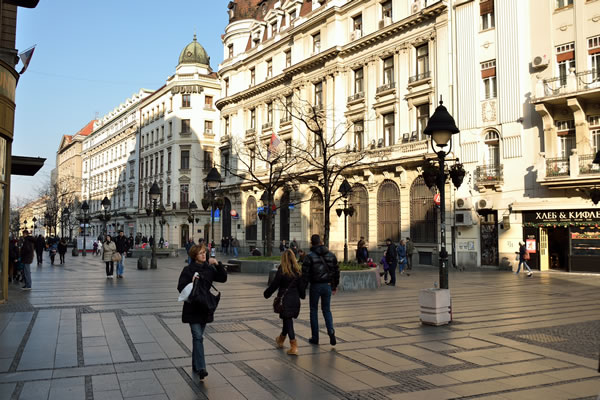 |
|
Knez Mihailova, the main shopping street of Belgrade |
|
The history of Belgrade is impressive. The Danube City has a seemingly strategic location, because history teaches us that the city was often the centre of skirmishes. But also in recent times the city was often in the middle of conflicts. The town fell into the hands of the Austro-Hungarian Empire at the beginning of the First World War, due to the help of the Germans. That did not last long, because after their defeat at the end of the First World War, Belgrade became the capital of the newly created Yugoslavia, the land of the South Slavs. In World War II it was again hit. Both the Nazis and the Allies bombed the city, and after the Germans were again defeated, the era of Tito began, who kept Yugoslavia together, using the necessary force and by getting rid of all political opposition powers. Belgrade was the capital.
| |
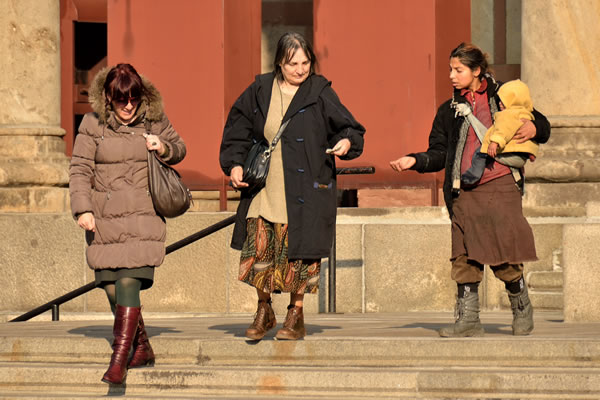 |
|
A beggar on the stair of the Sveti Marko Church |
|
Belgrade is now back into calmer waters. It is now the capital of the Republic of Serbia and plays therefore a major role in the acceding of Serbia into the European Union. Serbia is a candidate member, but it still needs to meet certain conditions in order to join. Reforms in the electoral system, tackling organized crime and human trafficking, and a fully independent position of the judiciary system are important conditions. However, the most important step that Serbia still needs to make in the progress towards EU membership, is to normalize relations with Kosovo, which was spun off in 2008 from Serbia, and declared itself independent. Steps are made and one expects to commence the actual negotiations somewhere in 2014. And if Serbia eventually joins the EU somewhere in the future, Belgrade will undoubtedly become a popular city trip destination for many Europeans, who presently think that Serbia is still a step too far for them. |
|
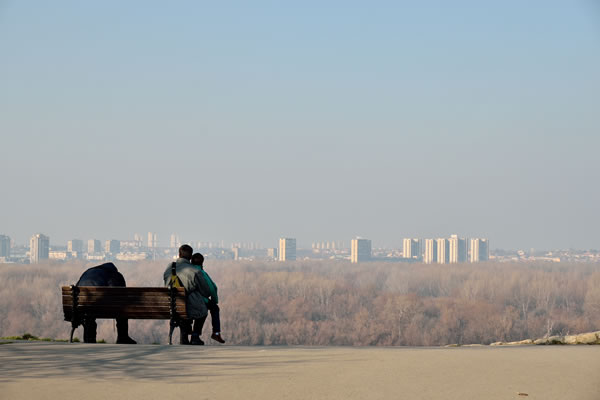 |
|
View on Novi Beograd (New Belgrade) from the Kalemegdan Citadel |
|
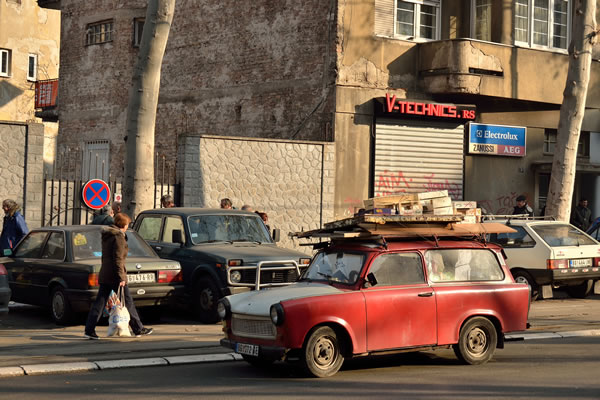 |
|
A fully operational Trabant in central Belgrade |
|
 |
|
Belgrade's railway station |
|
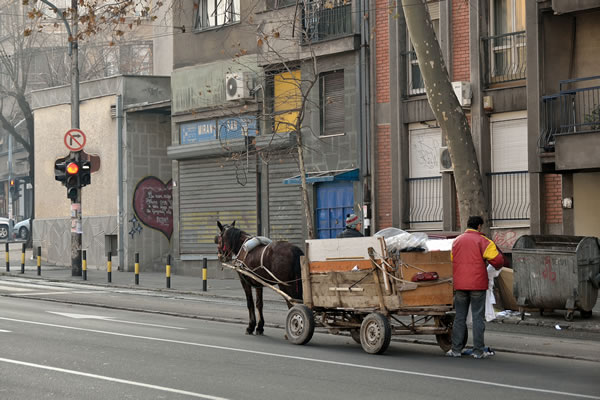 |
|
Poor people looking for things to use in garbage containers |
|
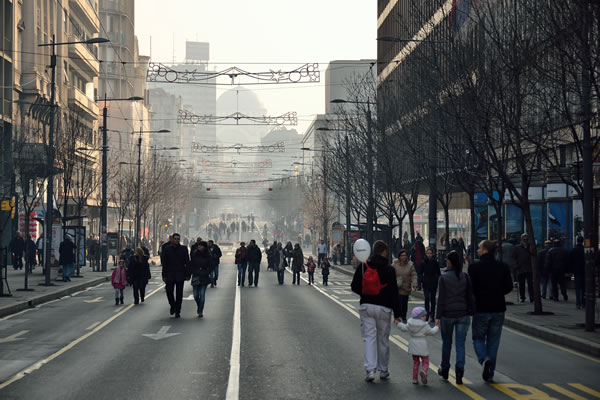 |
|
A stroll on Kralja Milana |
|